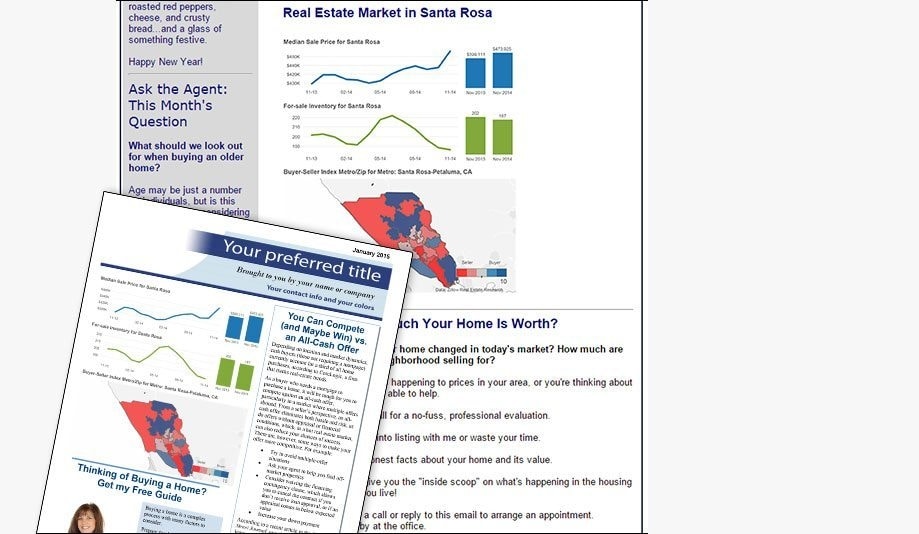
Read through your finished newsletter a few times, with a careful eye for both grammar/typos and readability. Change the existing font(s) if they don’t match your style and insert shapes, arrows, icons, and more if needed. Swap in your own images as needed to fit the layout of your chosen template and fill in your original content around them. Use our color palette tools to apply your signature color scheme, then replace the sample logo with your own and give your newsletter an on-brand title. Decide which one is the best fit in both style and layout and begin customizing. Then, flip through the real estate newsletter templates available in our online catalog. In this case, you’ll want to grab your logo file, high-quality photos, branding strategy, and all of your original content. To begin, always gather everything you’ll need in one place. Ultimately, though, it’s the seller’s decision.Making a real estate newsletter to share with past, current, and prospective clients is far less complicated than it may seem at first glance. Transactions usually tend to work out better that way. On balance, sellers ought to think seriously about disclosing problems and issues before buyers find them. Once the buyer loses trust, all further negotiations and interactions will probably be much more painful, if they continue at all. If the buyer has to discover an issue by itself, the buyer will often lose trust in the seller, concluding that the seller was trying to hide something, trying to sell a Class A product that’s really a Class B or C product. If the seller then plays its cards right, the buyer would have a hard time coming back and complaining about the issues and concerns that were disclosed.Įarly disclosure by the seller also has the advantage of preserving the buyer’s trust. Yes, they might result in a reduction of the buyer’s offer, but the buyer has every incentive to make that offer as appealing as possible.
#Real estate newsletters how to#
In the context of a competitive sales process, if the seller discloses any issues or concerns about the property as part of the initial due diligence disclosures, each buyer has an incentive at the bidding stage to figure out how to live with those issues or concerns as much as possible. The buyer will have to find some other excuse instead. They won’t give the buyer new leverage once the problems are discovered, or an excuse for a price retrade at the end of the due diligence period. This way, those weak points won’t come up as surprises or smoking guns. Instead, a seller might go in the opposite direction and affirmatively disclose them in a direct way. With that in mind, a seller might not try to hide or bury its weak points and hope that the buyer doesn’t find them or take them seriously. Whatever deficiencies exist, a prospective buyer will almost certainly identify.


They aren’t buying on the back of an envelope or in between phone calls. In 2023, almost every buyer of any substantial commercial real estate is a careful buyer. Still, the buyer might miss any deficiencies, and that would be a good thing for pricing.Īs a third strategy, the seller might go out of its way to identify issues and weak points that a careful buyer will probably find in its investigation. Even if the seller did have something to hide, the buyer would probably find it, so why bother? And why go through the process of making the buyer ask for things? Just provide everything.

If a seller takes that approach, then the seller might offer buyers a complete “data dump”-every possible bit of documentation about the property-recognizing that the seller has nothing to hide. They have competent inspectors, lease reviewers, and other consultants. They know how to mine the Internet and other sources for third-party information on a property. As a second strategy, the seller might decide that in 2023 buyers of real estate don’t miss much.


 0 kommentar(er)
0 kommentar(er)
